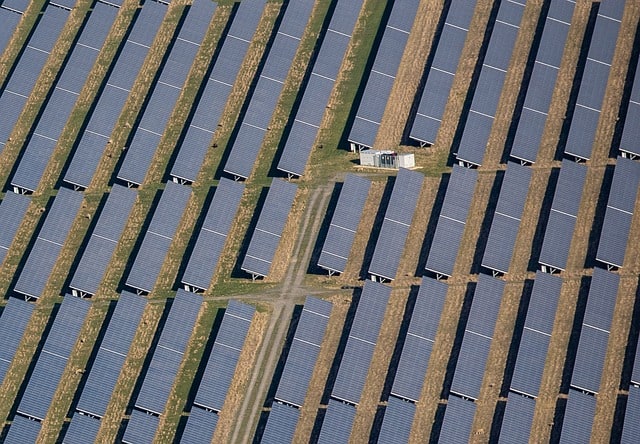
A plan to create a 30MW solar farm on land at Hengrove Farm in Margate will be discussed by Thanet councillors next week.
The solar farm off Shottendane Road would comprise two parcels of land, one bound by Manston Road and the other bound by Woodchurch Road.
The site is currently in arable agricultural use, producing a variety of crops.
Industria Solar Hengrove Ltd say the proposed 41.55 hectares solar farm would be in operation for 40 years and provide enough energy to meet the annual needs of 9,458 homes.
The company says this save approximately 6,114 tonnes of carbon emissions per year and would include planting of native species hedgerows, woodland belt, wildflower meadows, and a pond to attract wildlife.
Substations, transformer, workshop and storage container, plus security fencing and 56 CCTV cameras and associated infrastructure would also be created.
The solar panels would be bifacial, meaning they also absorb light from the underside, even if it is reflected light from the ground or nearby structures. Industria say bifacial panels are more land efficient as less panels are required to generate the required output.
The construction period would be expected to last approximately five months.
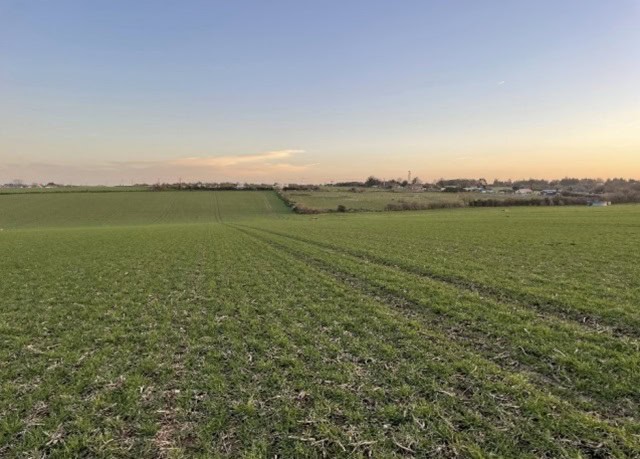
However, planning officers at Thanet council have recommended the application is refused, saying it will: “result in substantial harm to the rural and unspoilt open character and distinctive landscape qualities of the countryside” and “would fail to secure adequate mitigation/compensatory habitat to offset the loss of farmland bird habitat, resulting in significant harm to biodiversity.”
Natural England says it may object unless there is further information supplied about mitigation measures because “the application could have potential significant effects on the Thanet Coast and Sandwich Bay Special Protection Area (SPA).”
The organisation adds: “We consider that the proposed development, if temporary as described, is unlikely to lead to significant permanent loss of BMV agricultural land, as a resource for future generations.
“This is because the solar panels would be secured to the ground with limited soil disturbance and could be removed in the future with no permanent loss of agricultural land quality likely to occur, provided the appropriate soil management is employed and the development is undertaken to high standards.
“Although some components of the development, such as construction of a sub-station, may permanently affect agricultural land this would be limited to small areas of BMV agricultural land.
“However, if during the life of the proposed development it is likely that there will be a reduction in agricultural production over the whole development area, your authority should consider whether this is an effective use of land.”
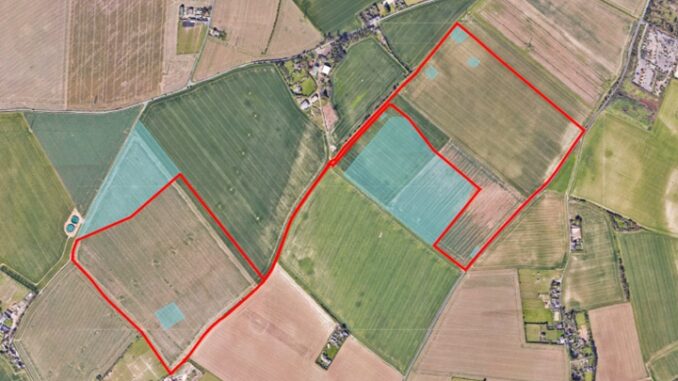
The British Horse Society has also objected over the loss of public bridleways.
It says: “Kent is a county with a dense population of horse owners with over 40,000 horses passported to addresses within Kent with 1,100 of these with owners living within the Thanet District Council area.
“The area around Birchington is especially densely populated with horses. The cost of keeping these Thanet owned horses results in a contribution to the economy of over £6 million per annum, much of which will be spent within the district (feed merchants, hay suppliers, livery yards, etc).
“Just 16.7% of public rights of way in Kent are available to equestrians and much of that is disconnected by roads which were once quiet, rural roads and are now busy thoroughfares as a result of massive development in the region.
“Consequently, it is imperative, especially with significant developments of this nature, that existing equestrian access is fiercely protected and new bridleways/byways and good connections to other potential future equestrian routes are provided as a part of the project.
“It should be recalled that higher status public rights of way provide the opportunity for safe exercise for more members of the local community, in particular women (who form the majority of equestrians) and those who are less able bodied meaning provision of this nature provides improved safety, health and wellbeing benefits for the widest range of users.
“Bridleways are therefore an even more inclusive form of public highway than walking and cycling routes.”
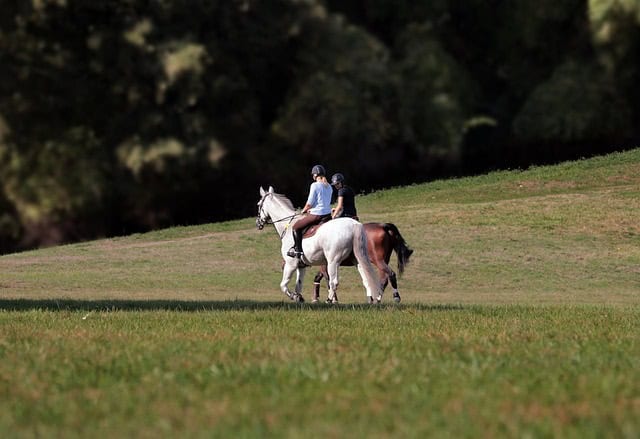
The Society says three public bridleways are directly impacted by the application, adding: “Any development of this area needs to ensure that PROW are kept open and safe to use for all users with any closures being minimal and with reinstatement being to at least the same.
“Whilst we applaud efforts to provide renewable energy, we feel that this project is currently missing the opportunity to optimise the recreational use of the existing and future public rights of way for as many local people as possible.”
Kent County Council also raises public right of way issues and biodiversity, particularly mitigation for Skylark, saying: “A peak count of 35 skylark territories were identified within the final red-line boundary during the breeding bird surveys.”
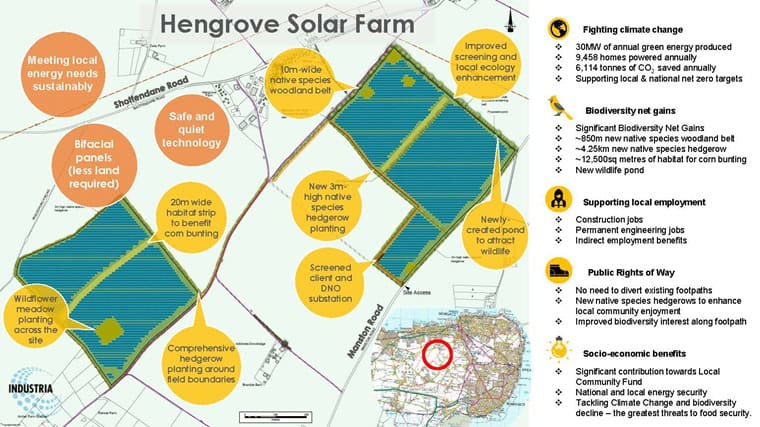
The applicant highlights that Thanet council declared a Climate and Biodiversity Emergency in July 2019 and aims to make the district carbon neutral by 2030.
Documents add: “Solar farms can be constructed quickly on land under just one or a few ownership titles, significantly boosting the renewable energy generated in the UK in the short term rather than relying on a large number of owners or associations to be in a position to consider roof-mounted panels, particularly in times of economic hardship.
“The temporary nature of large-scale solar farms allows to speed up the transition of UK domestic renewable energy sources whilst other sources, such as offshore wind farms, are enhanced or developed.
“The proposed solar farm would be operational for a temporary period of 40 years, after which it would be decommissioned, and the site restored to full agricultural use.
“During this period, the solar farm would generate 30MW of electricity every year. This is enough to power 9,458 homes annually and is the equivalent of offsetting 6,114 tonnes of CO2 emissions per year.
“The proposed development would significantly support the goals of and contribute to both local and national Climate Change targets, as well as result in substantial improvements for local wildlife.
“Temporary solar farms not only provide the benefit of renewable energy generation but also contribute towards a greener and more secure domestic energy system. The proposed solar farm in Thanet would provide all of these benefits which are encouraged and enshrined in legal obligations and strategies at both the national and local level.”
The applicant also says: “Solar farms are considered to support the protection of BMV land and ensure the food security needs of the future are supported as global temperatures likely increase over the coming decades.
“Farming costs have also increased significantly recently in terms of spiralling machinery costs, fertiliser costs, sprays (fungicides and herbicides), fuel, and labour costs (due to labour shortages).
“The solar farm would help diversify the farming business, reducing the risk of farming by incorporating a steady and medium/long-term income stream with which to support the agricultural business’ food production and associated rural employment. This approach is also supported by the National Farmers Union.”
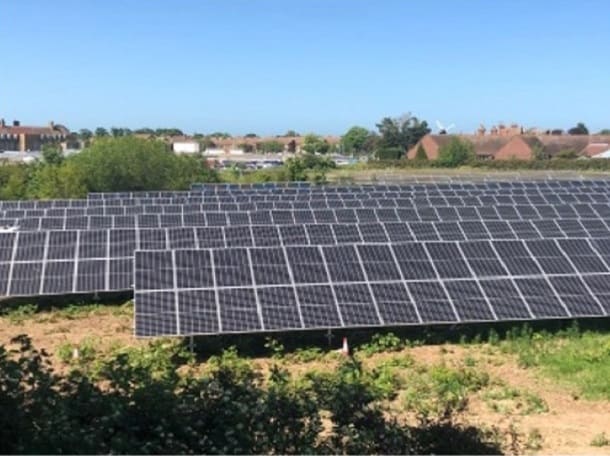
Thanet council planning officers say: “There is support at both national and local level for the principle of this type of development. The proposal would address climate change issues and support the transition to a low carbon future and weight is given to the significant environmental benefits of the scheme in relation to the creation of renewable energy and this dimension of sustainable development.
“The benefits associated with renewable energy in terms of health and water conservation are also acknowledged. The scheme would also have considerable biodiversity and ecology benefits in terms of Biodiversity Net Gain and associated green infrastructure enhancements.
“However, the environmental harm to the rural undeveloped character of the site and landscape of the area in this highly sensitive and prominent location, in addition to the scale of loss of good agricultural land for the life of the development which is assessed as 40 years, would be highly significant.
“Taking all of the information submitted in support of the application and the advice of consultees into consideration it is the Officer’s view that, on balance, the environmental harm arising from the significant visual impact outweighs the environmental climate change benefits.”
Industria Solar Hengrove Ltd is part of Industria Brand Energy Ltd – a renewable energy development company that works with landowners around the UK. The site would be leased long-term to Industria Solar Hengrove Ltd, giving the landowner a long-term form of income.
The Industria website says land rental agreements result in a £1.5m upfront payment ‘based on a compliant solar farm’ and the creation of 100+ jobs during the construction phase.
The application will be discussed by Thanet council’s planning committee on May 22.

